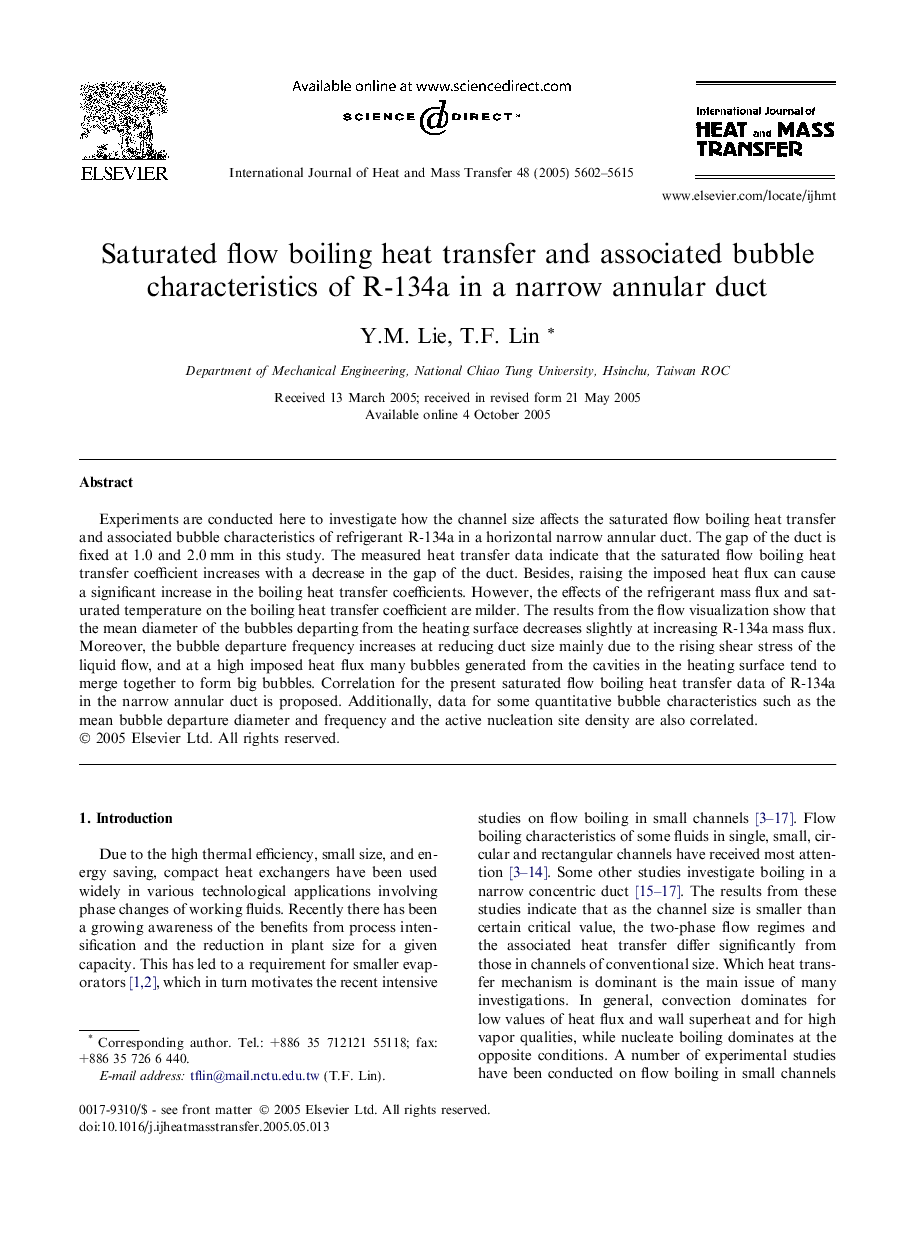| Article ID | Journal | Published Year | Pages | File Type |
|---|---|---|---|---|
| 662611 | International Journal of Heat and Mass Transfer | 2005 | 14 Pages |
Experiments are conducted here to investigate how the channel size affects the saturated flow boiling heat transfer and associated bubble characteristics of refrigerant R-134a in a horizontal narrow annular duct. The gap of the duct is fixed at 1.0 and 2.0 mm in this study. The measured heat transfer data indicate that the saturated flow boiling heat transfer coefficient increases with a decrease in the gap of the duct. Besides, raising the imposed heat flux can cause a significant increase in the boiling heat transfer coefficients. However, the effects of the refrigerant mass flux and saturated temperature on the boiling heat transfer coefficient are milder. The results from the flow visualization show that the mean diameter of the bubbles departing from the heating surface decreases slightly at increasing R-134a mass flux. Moreover, the bubble departure frequency increases at reducing duct size mainly due to the rising shear stress of the liquid flow, and at a high imposed heat flux many bubbles generated from the cavities in the heating surface tend to merge together to form big bubbles. Correlation for the present saturated flow boiling heat transfer data of R-134a in the narrow annular duct is proposed. Additionally, data for some quantitative bubble characteristics such as the mean bubble departure diameter and frequency and the active nucleation site density are also correlated.
